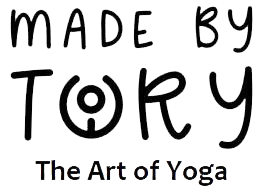The Connection Between Breathwork and Yoga: Techniques for Better Practice

The casual yoga practitioner, and even many who are more serious about it, often neglect pranayama (breathing techniques) during their yoga session.
The poses, Asana, and sequences are the display of yoga. However, pranayama is focused on breathing, helping practitioners to build more focus and develop mindfulness.
If you are a regular yogi, you must think about Breathwork and Yoga simultaneously.
Previously, we discussed the importance of warm-ups in yoga, meditation, and breathing in yoga practice—all the crucial aspects of enhancing your yoga journey. Now, let’s focus on another key element: the connection between breathwork and yoga:
So, how does it benefit your health? Let’s find out in this article, along with the techniques of breathwork for better practice.
Why is Breathwork and Yoga Important Together?
Stress is a natural reaction to difficult or dangerous situations, but it can harm your health and well-being if it becomes persistent or overwhelming.
One way stress affects your body is by changing your breathing rhythm. When stressed, you breathe faster, shallower, and more irregularly, reducing oxygen flow to your brain and organs while increasing heart rate and blood pressure.
This might lead to a vicious cycle of increasing stress and anxiety.
This can be addressed using Pranayama. “Prana” signifies “life force” in Sanskrit, but “ayama” denotes “stretching.” With the proper techniques, you can assist your muscles relax and quiet down.
Here are some of the Pranayama yoga breathing exercises benefits:
- Muscle Relaxation
- Increase in energy levels
- Reduced anxiety, depression, and stress
- Lower/stabilized blood pressure

Top 4 Breathwork Techniques for Yoga
Mindful breathing focuses on not only the respiratory component but also the mental component of paying attention and becoming aware of the mind, body, and breath all at once. Individuals can regulate their emotions and get more understanding by paying more attention to their thoughts and feelings.
With the following few techniques, you can enjoy the best Pranayama benefits in yoga:
-
Ocean Breath (Ujjayi)
Ujjayi breathing requires some practice to master. Practitioners feel it helps to ground the body and offer thermal energy for physical yoga practice.
Set on the best yoga mats and begin by inhaling deeply through the nose and exhaling while constricting the back of the throat. This should provide a sound reminiscent of ocean waves.
Another approach to practice this technique is to breathe out with your lips open as if you were fogging a mirror to clean it.
-
Nadi Shodhana (Nostril Breathing)
This is sometimes referred to as alternate nostril breathing. This form of breathwork is particularly effective for stress relief. It should reduce nervous system activity by activating the relaxation response. Traditional yoga practice purifies and unblocks the body’s energy.
Begin by holding your right hand in a fist in front of your nose. Close the right nostril with your thumb and inhale through the left. Close the left nostril with your ring finger, withdraw your thumb, and exhale through the right. Inhale via the right nostril, then close it with your thumb, release your ring finger, and exhale through the left. This is one round of nadi shodhana.
-
Kumbhaka
Kumbhaka means “pot-like” and relates to retention, which is a phase of pranayama. Retention is a state of not inhaling or exhaling that is related to enhanced consciousness and the opening of the being to subtle energies. To do so, inhale deeply and hold the air in your lungs for around ten seconds before inhaling again. If this is difficult, begin with only a few seconds and work your way up to 10.
Holding your breath for an extended amount of time causes your lungs to enlarge. This allows you to take in a little extra breath, which results in more oxygen reaching your heart and other muscles.
-
Dirgha (three-part breath)
The Three-Part Breath, also known as Dirgha pranayama, is a simple yet effective exercise that activates all of these advantages. It should feel like a smooth wave of movement. The breath should be thoroughly expelled.
How to do it? Inhale through your nose, allowing your abdomen to softly expand as the air enters your lungs. Then, exhale through your nose, tightening your abdominal muscles and bringing your belly button closer to your spine to allow as much air as possible to escape your lungs.
Part Two is similar to Part One but with an additional step. Inhale via the nose, enabling your abdomen to expand, followed by your rib cage. When you exhale through the nostrils, squeeze the air out of your rib cage and belly until they are completely empty.
Now, in the 3rd part, Take it a step further. Inhale via your nose, allowing your abdomen to expand as the breath enters your lungs and rib cage, then encourage it into your upper chest, pectoral muscles, and collarbone. Then, exhale completely.
Conclusion
Breathwork and yoga go hand in hand, enhancing mindfulness, reducing stress, and improving overall well-being. By incorporating techniques like Ujjayi, Nadi Shodhana, Kumbhaka, and Dirgha, you can deepen your practice and experience greater relaxation.
Using quality yoga props and comfortable yoga activewear can further enhance your sessions, providing the support and flexibility needed for better performance. At Made by Tory, we offer premium yoga essentials designed for comfort and durability.
Whether you’re a beginner or an advanced yogi, integrating breathwork and the right accessories into your practice can significantly impact your journey to holistic wellness.
